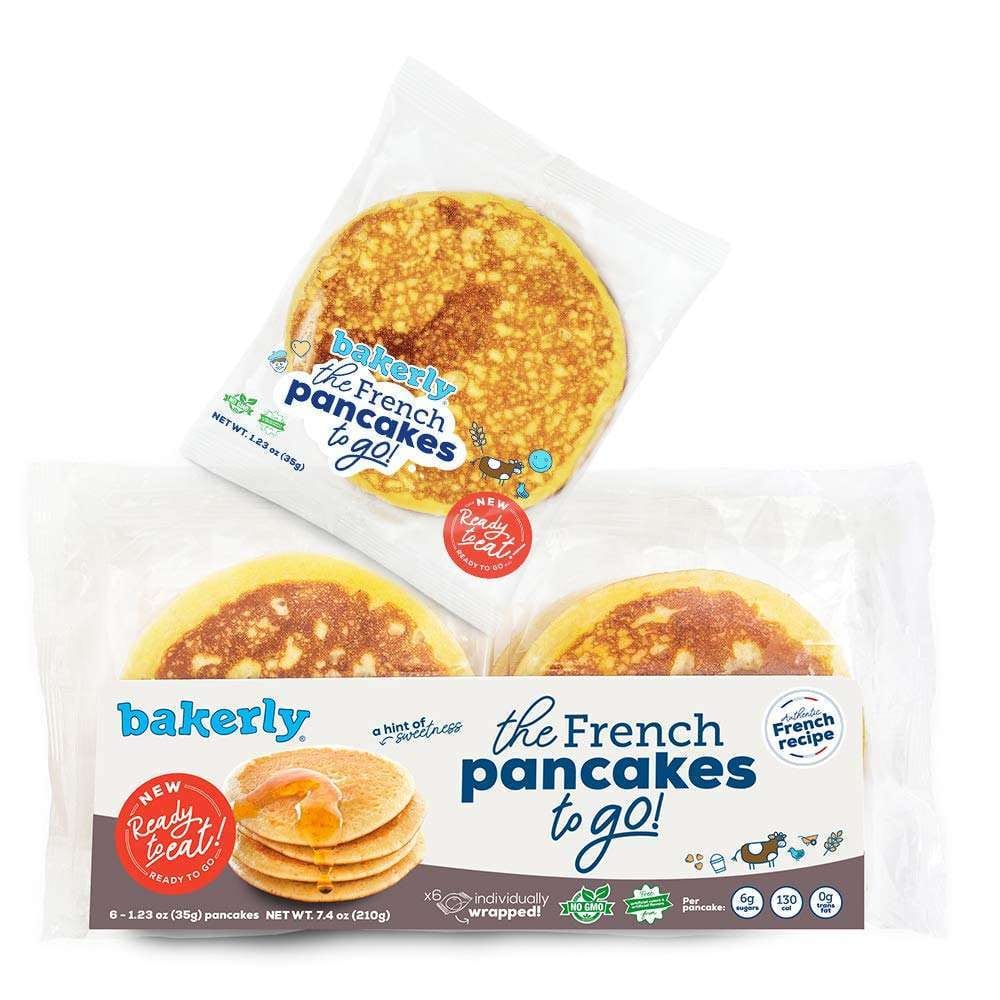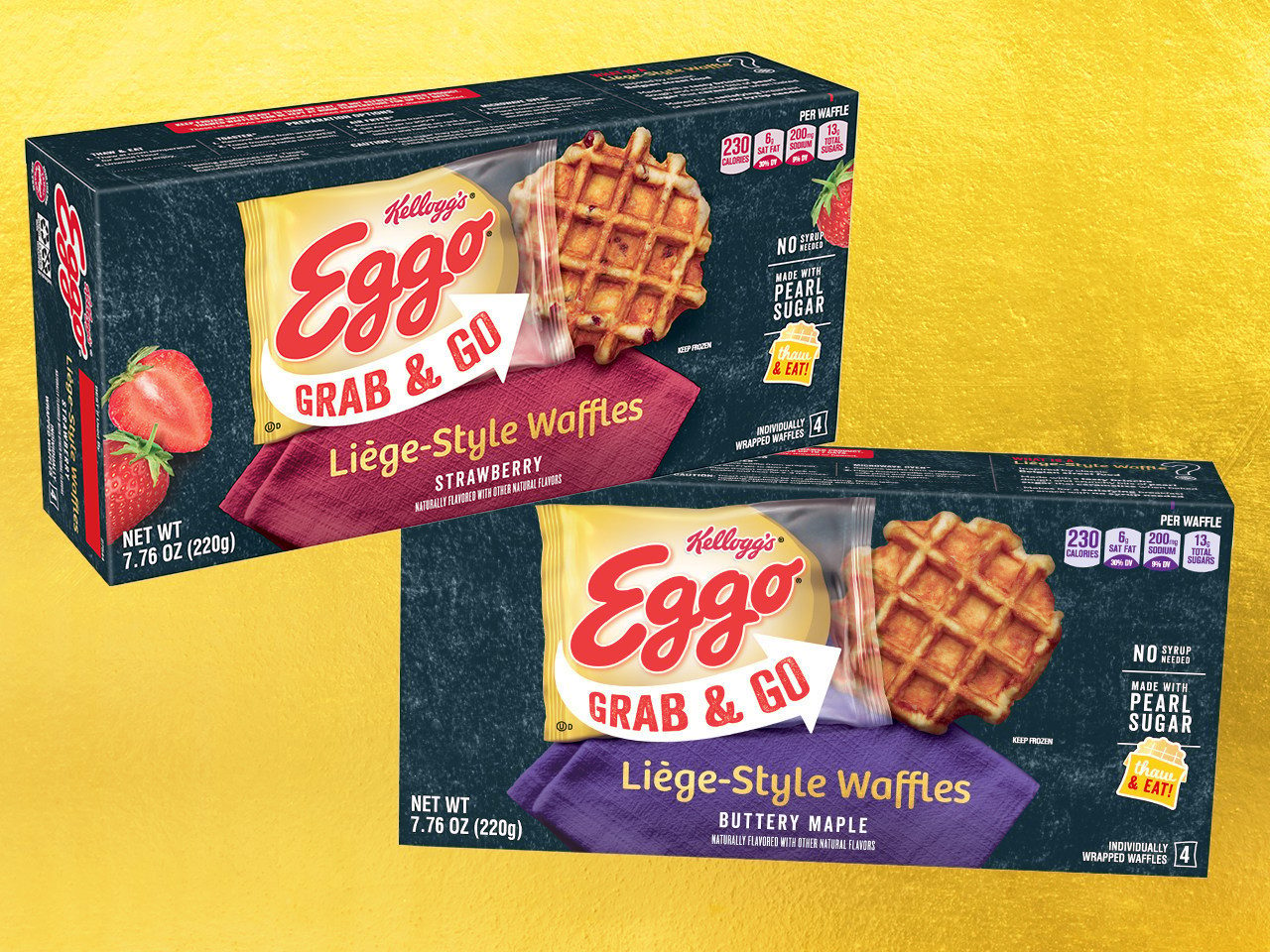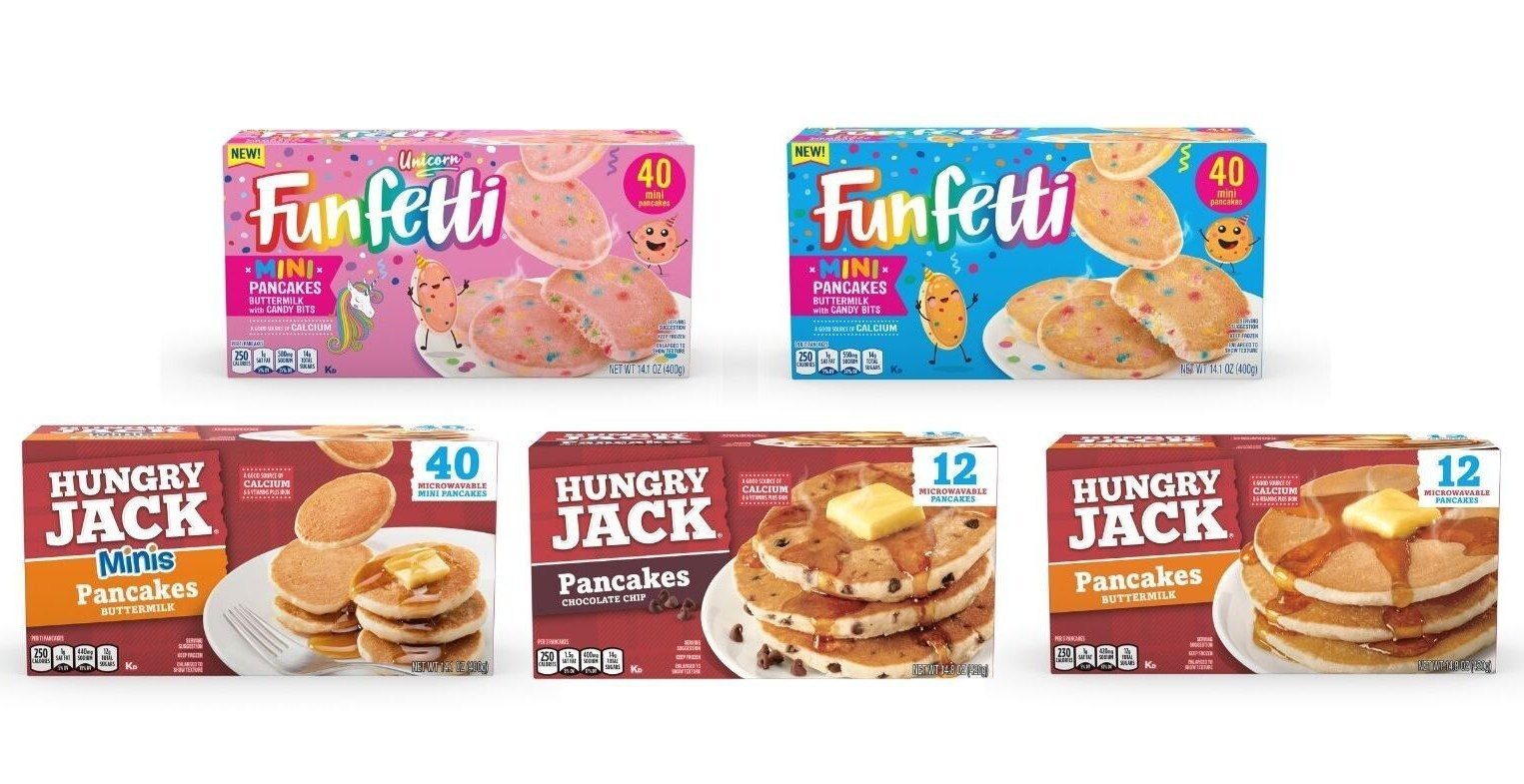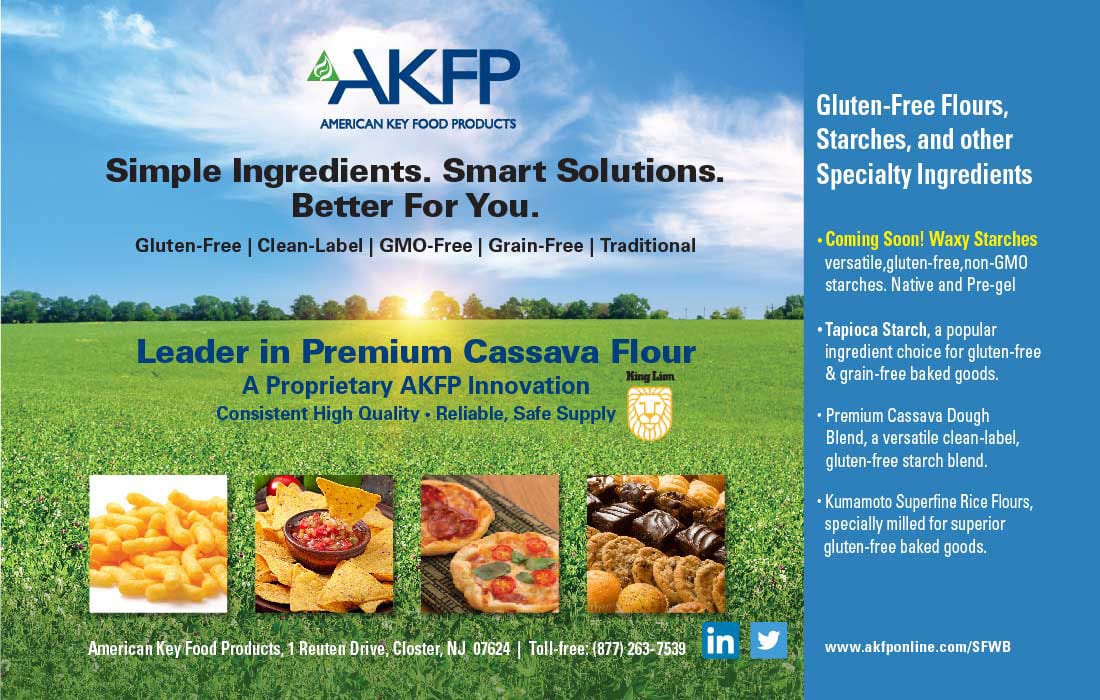The BOTTOM LINE
- Breakfast transitions to sit-down vs. on-the-go
- Consumers stockpiled pancake / waffles mixes during pandemic
- Walking the line between healthy and indulgent products
Breakfast with the family
Bringing breakfast back with pancake and waffle options.
Kimberly J. Decker, Contributing Writer
They say it’s the most important meal of the day. And during the lockdown’s heights—as families hunkered at home with more morning time on their hands—it may’ve grown even more important.
One thing’s for sure: It definitely grew more prevalent.
We’re talking about breakfast, and although these two-plus years since COVID-19 disrupted everything—morning routines included—it appears that consumers may still be giving an honest-to-goodness, sit-down breakfast a try.
Breakfast
STATE of the INDUSTRY

SPONSORED BY
This is quite a turnabout for an eating occasion that had been leaning on-the-go for some time, and the turn has yielded dividends for makers of classic breakfast items like pancakes and waffles, whether in frozen, dry-mix or increasingly innovative formats.
And even as the morning meal reverts to its modern-day manic mean, sector watchers wager that this breakfast bounce may last. Thus, observes Danielle Gormley, brand marketing, Sovos Brands, owner of Birch Benders, Denver: “The pancake and waffle category is growing, driven by on-shelf pricing and premiumization. So as consumers enter a hybrid work and school schedule, brands should be aware of the opportunities, and of consumers’ needs.”
Market data
“During the pandemic,” Gormley continues, “consumers rushed to shelves to stockpile key pantry items—including pancake and waffle mixes. And the many out-of-stocks in the category forced consumers to try new brands, which drove an increase in trial, as well.” The upshot, she concludes: “Breakfast-centric brands—like ours—experienced a large consumption spike during that time.”

HOVER OVER CHART TO SCROLL DOWN
Source: IRI Market Advantage, Integrated Fresh, Total U.S. - Multi Outlet w/ C-Store (Grocery, Drug, Mass Market, Convenience, Military and Select Club & Dollar Retailers), 52 Weeks Ending 03-20-22

And data from IRI, Chicago, bear him out, indicating a 45.1-percent jump in dollar sales of Birch Benders frozen waffles, raising the line’s take to $14.4 million for the 52 weeks ending March 20, 2022.
A similar story played out for other specialty brands, including both Kodiak Cakes, whose frozen waffle sales topped $91.1 million—up 55.6 percent for the period, per IRI—and Belgian waffle maker Oakrun Farm Bakery, which ended the 52 weeks with a modest $8.7 million in sales, but a whopping 95.9% in year-on-year growth.
Kashi, despite being acquired by Kellogg’s in 2020, retains its reputation as a small, crunchy granola brand—so, perhaps not surprisingly, its frozen waffle business, like those of the previously mentioned specialty brands, enjoyed 33.5-percent growth and total sales of $17.5 million over the 52 weeks.
Courtesy of Bakerly

Courtesy of Kellogg Co.
Meantime, Kellogg’s itself—the category leader—ended the period with frozen waffle sales down 0.6 percent, a mere blip in the brand’s $790.4 million total. And in the number-two position, private-label brands saw frozen waffle sales fall even further, although the 9.3-percent drop still left total sales at a healthy $130.8 million.
Broadening the view to frozen breakfast entrées—including pancake meals—sales continued to rise and shine. In the top spot is Jimmy Dean, with frozen breakfast sales of $564.6 million and growth of 14.1 percent, followed by private-label brands, sales of which grew an almost-identical 14.3 percent to reach $102.2 million total.
More remarkable are the performances of brands like Eggland’s Best, whose frozen breakfast sales jumped 725.7 percent—you read that right—to $28.4 million total, as well as Tattooed Chef, which saw sales soar 188.2 percent to $20.1 million.
In fact, the only brand whose frozen breakfast sales fell for the 52 weeks was Kellogg’s, down 22.2 percent to a still-strong $87.0 million in all.
Looking back
Not even the more eye-popping numbers in IRI’s analysis would likely surprise Aaron Robinson, associate director of brand management, Kodiak Cakes, Park City, UT. After all, he points out, “Breakfast consumption spiked during the pandemic, but so did consumption of just about every other category in the store. I think what’s more interesting is what we’ve seen over the last year.”
Namely, while industry analysts held that consumers would “eventually get back to ‘normal’ life” once businesses reopened and onsite work resumed, “the sentiment now is that a significant portion of the workforce will never go back to working in an office fulltime,” Robinson concludes. “What this means for breakfast is that the increase in at-home consumption will stick. Cutting out that morning commute means more time to fire up the griddle for pancakes, or to enjoy warm waffles with the family.”
And why not: Pancakes and waffles are family foods. “A lot of consumer behavior around these options stems from families with kids,” Robinson argues. “With pancakes, for example, consumers are often looking for a warm breakfast that can create shared moments with loved ones. And frozen waffle consumers are likely to buy the product as a hot, convenient alternative to things like cold cereal or a bar.”

Courtesy of Birch Benders

Gormley agrees, noting that while the pancake consumer runs the gamut—“singles versus large households, for example”—pancakes themselves “play a specific role in the daily routine of offering a convenient but hearty way to start the day right with a mix of protein and carbohydrates for sustained energy.”
Which alludes to another category driver: wellness.
Robinson sees his company’s strong year-over-year growth as “a testament to consumers looking for more functional benefits from their foods.” Consumers, he says, “are more educated than ever; they want to know what’s in their food, and they need to feel comfortable with it. So brands with cleaner labels and healthier ingredients are winning across the store, including in pancakes and waffles.”
They’re winning so much that Robinson foresees Kodiak and allied better-for-you brands “driving the majority of new dollars going to these breakfast categories,” he says. “We consistently see consumers turning to more nutrient-dense options for themselves and their families.”
That said, consumers also seek healthy pancakes and waffles “that still taste great,” Robinson insists. “It’s important to note that brands can’t forget about taste. Those sustaining growth are the ones that can balance taste and nutrition.”
No wonder, then, that “classic and indulgent breakfast products,” as Gormley calls them, also got a boost during the pandemic; it’s no secret that consumers turned to these indulgences to get a boost of their own.
But perhaps more importantly, the line dividing indulgence and health isn’t as sharp as it used to be. “How we define ‘health’ has evolved past the purely physical to include more holistic concepts, such as emotional and mental health,” Gormley explains. “So brands need to consider how to address this shift.”
Running parallel with that shift, Robinson adds, is “a decline in demand for products catering to a specific diet”—a phenomenon that he describes as “another interesting trend we’ve seen over the last year.” How that trend plays out in the store is in consumers’ search for waffles and pancakes “with a more well-rounded health profile,” he says. “Benefits like protein, lower sugar, whole grains, no artificial ingredients, fiber, and more are timeless and less restrictive.”
They’re also satiating, which is another signal morning-meal asset. “No one wants to feel hungry an hour after breakfast,” Robinson offers, “and both pancakes and waffles—especially those with added protein—do a great job of keeping people satisfied longer.”
How does he know this? One key avenue to consumer intel that any savvy brand now follows is social media, and savvy breakfast brands are no exception.
“We’ve always been a creative, inclusive brand and are constantly coming up with new sweet and savory ways to use our mixes,” Gormley says. “But we get the biggest inspiration from the Instagram and social recipe content our consumers share with the world. We’ve learned that our core business of pancake mixes is versatile enough to make anything, from biscuits to pizza and beyond.”

Courtesy of Hometown Food Co.
Robinson is equally impressed with the engagement. “We love watching how creative consumers get with our products,” he says. “There’re some incredibly delicious-looking recipes out there using our pancake mix as a base for BFY donuts, muffins, and sweet breads. Breakfast sandwiches made with our frozen waffles are another fun example of how consumers use our products creatively.” And as for topping ideas, he’s seen everything from fruits and nut butters to fried chicken.
Another insight to emerge in part courtesy of social media is the extent to which pancakes and waffles are breaking free of breakfast.
“A more surprising insight we’ve found is that products like our flapjack cups and frozen waffles have stretched dayparts into more snacking occasions than before,” Robinson says. Their waffles, in particular, are “being consumed throughout the day as an on-the-go snack” he notes, as “consumers
look for more functional benefits from snacks. The whole grains, fiber and added protein in products like ours are really resonating.”
Gormley adds that while Birch Benders began as a pancake- and waffle-mix brand, “We’ve since moved into other categories and eating occasions, with brownies, cake, and muffin mixes, on-the-go cups that’re ready in minutes and now snackable ready-to-eat cookies all in our lineup.”
It all goes to show that “convenience continues to be important,” Robinson concludes. “Not everyone has time to make pancakes in the morning, which is why our flapjack cups business has grown so much”—up 32% in dollar sales over the past 52 weeks, he says. “We’ve received a lot of positive feedback about how easy and delicious they are. They’re lifesavers when you want a hot breakfast but don’t have time to cook one.”
Looking forward
So how else are brands integrating pancakes and waffles into our lifestyles even more?
Gormley confesses to being “ecstatic” about the reformulation and relaunch of Birch Benders’s “hero” keto and keto chocolate-chip pancake and waffle mixes. “We’re actively listening to our consumers,” XXX says, “and have significantly improved the formulas to achieve a dramatically tastier and fluffier pancake that still meets dietary needs. Many consumers claim they can’t tell the products are keto-friendly, low-carb or no-added-sugar. Sometimes, you just have to taste it to believe it.”
To celebrate its twenty-fifth anniversary, Kodiak Cakes launched a line of birthday cake-flavored items last year that included a Thick & Fluffy Power Waffle and Power Cakes pancake mix, which is already its second top-turning mix.
The company also debuted a blueberry-flavored pancake mix and is now taking on kids’ “breakfast gap.” As Robinson explains, “Despite rapid growth from BFY brands in both pancakes and frozen waffles, we still see very few options for kids in these spaces. With that in mind, we’re launching a line of products developed specifically to meet growing kids’ nutritional needs and taste preferences.”
Called the Kodiak Cubs line, it features multiple frozen waffle and instant-oatmeal flavors developed with input from parents and dieticians “to give moms and dads an easier way of getting wholesome food into their kids’ diets,” Robinson says.
And whether they get it at home on a lazy Saturday or in the drop-off lane at school, breakfasts like that are worth waking up for. SF&WB





